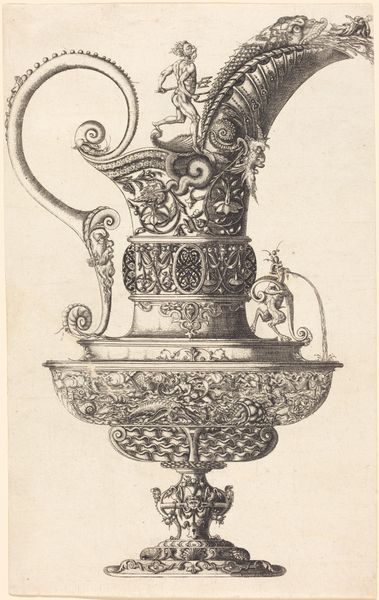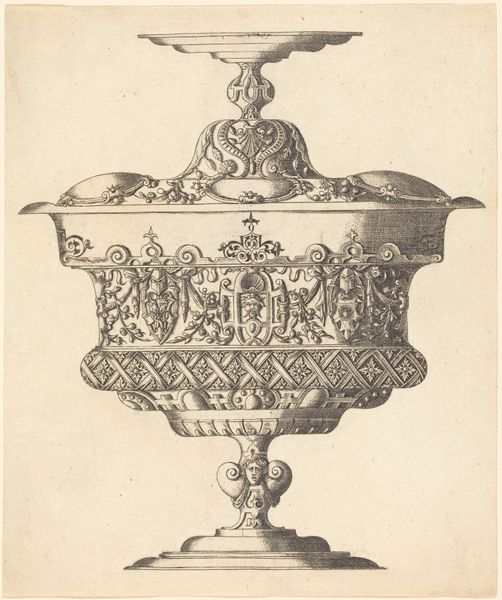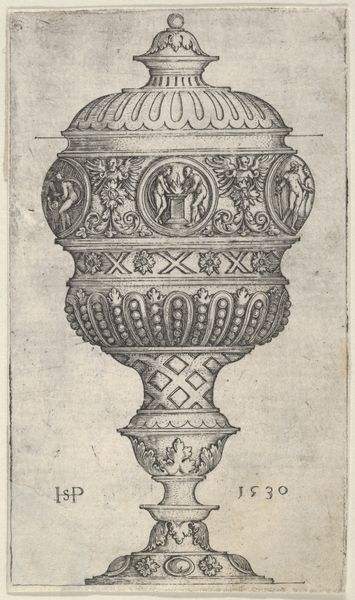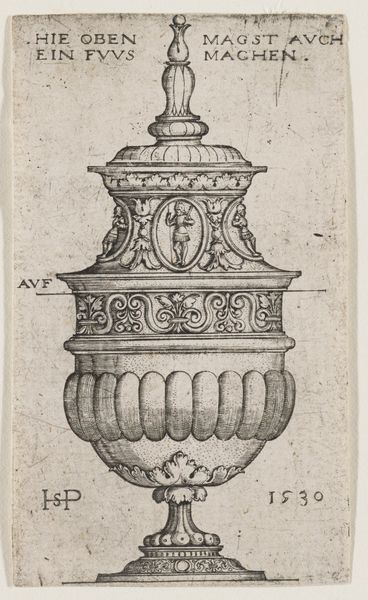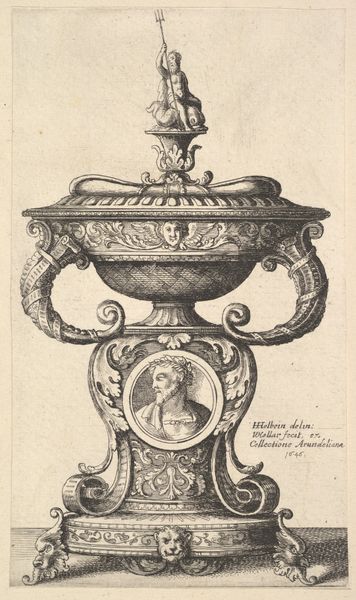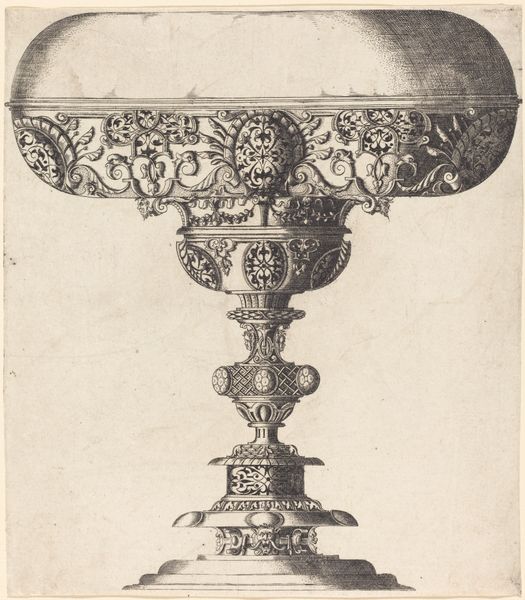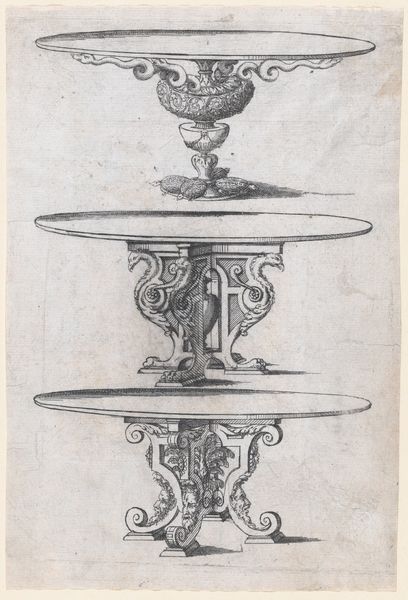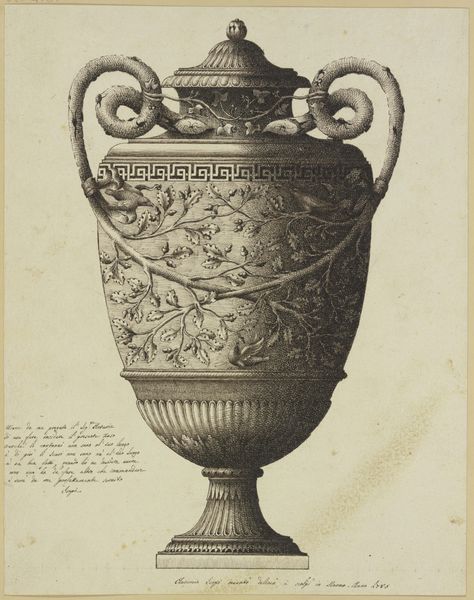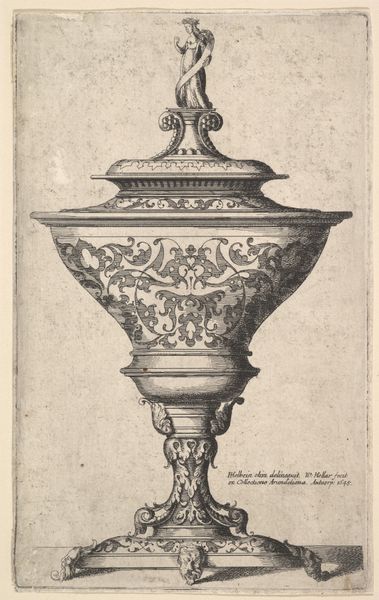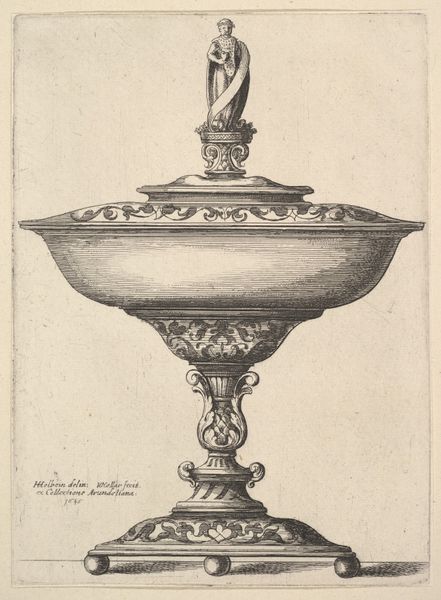
drawing, print, engraving
#
drawing
# print
#
form
#
11_renaissance
#
geometric
#
line
#
decorative-art
#
engraving
Dimensions: Sheet (Trimmed): 9 1/8 × 4 13/16 in. (23.2 × 12.2 cm)
Copyright: Public Domain
Curator: Before us we have an engraving of a “Covered Goblet With Owl” by Virgil Solis. It's part of the decorative arts collection at the Metropolitan Museum of Art. What are your initial thoughts? Editor: I'm immediately drawn to the layered construction and decorative elements. It speaks volumes about the labor and materials involved. I imagine the social context of such an object--luxury, display, even power. Curator: Absolutely. We should situate Solis and his practice more thoroughly. His engravings often circulated as models for artisans to create luxury goods. Examining who had access to the drawing itself as a commodity, alongside its impact, can uncover insights. Editor: Good point. The engraving suggests a metal object—silver or gold, likely. Thinking about mining practices, trade routes, the actual hands shaping the goblet, connects it to broader systems. What can we discern about the skills and workshops involved? Curator: It is equally fascinating to consider the iconography chosen. The owl is featured prominently in its lid. Symbolically it relates to wisdom, certainly, but could allude also to secret knowledge, a currency in patriarchal European courts where Solis circulated. Editor: And what about its form? The layers, the ornamentation...the cup itself functions to bring a group of people together. Were the raw materials extracted through exploitative labor, while the vessel now promotes communal values? Curator: These prints helped transmit Renaissance artistic trends, no doubt. But for me, understanding it fully means examining how gender, class and religious affiliations of Solis’ patrons shaped their commissions, even dictating such symbolism. Editor: Indeed, examining who controls access to resources becomes crucial. By tracing the goblet's proposed construction back to its sources—mines, trade, workshops—we reveal the interconnected web that luxury often conceals. It asks a powerful question: At what human and material cost? Curator: Ultimately, studying Solis means interrogating how art intersects with power, revealing the multifaceted narratives woven into objects we may see merely as beautiful or skillfully crafted. Editor: Seeing beyond aesthetic appreciation pushes us towards a more comprehensive socio-economic perspective that invites ethical introspection about labor and value in a larger society, both then and now.
Comments
No comments
Be the first to comment and join the conversation on the ultimate creative platform.
